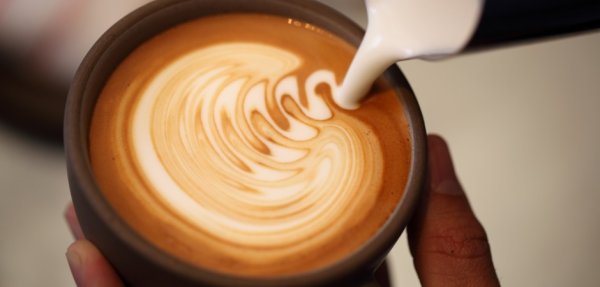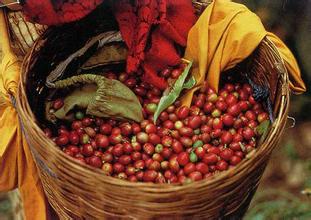Coffee brewing method: introduction of six best hand brewing methods in the world
In recent years, the scale of hand-brewed coffee has developed rapidly in China, and more and more enthusiasts have bought hand-brewing sets at home. On the one hand, the price of hand-made coffee utensils is more friendly to the people. Second, hand-brewed coffee can show the original flavor of coffee beans. However, there are many factors that affect hand-brewed coffee. Ten thousand people can flush out ten thousand flavors. Next, let's take a look at the hand brewing methods of the top six contestants in the 2015 World Coffee Competition, which is full of world coffee makers.

No. 6: Ruslan Shulga from Russian "full Coffee"
Russian contestant Ruslan Schulga uses Raes Melada Manor to grow roses and summer beans 1700 meters above sea level. "Sun-cured coffee beans are very sensitive to roasting," he stressed. In fact, before the competition, Shulga had tried and developed the bean with different roasters and different baking curves to compare and select the best baking degree and baking curve.
Shuerjia uses Hario V60 filter cup with 15g beans and 250g water to extract with a strong and comprehensive sense of fruit acid. The wet aroma of his coffee is orange, caramel and vanilla; it has aromas of iced peach tea, orange and medium sweetness of citrus. When the temperature of the coffee decreases, the acidity increases.
Fifth place: Robokoff from the Dutch "Gbagbo Coffee"
"Welcome to my mini-coffee bar"-these are the opening remarks of the Dutch contestant. He added: "every aspect of coffee development today is full of innovation." Of course, "innovation" is the meaning of his game. He uses the Diamante estate in Costa Rica, the fine beans treated by anaerobic fermentation, the beans are hybridized by Kadoue and Kaddura, and the coffee beans that retain pectin undergo 20 hours of fermentation, giving the coffee beans a moist aroma of cinnamon.
But Kauf invented his own way of cooking. "I've been thinking, what do I like?" he said. The answer is: 1. I like to measure the alcohol thickness of coffee.
2. "the permeability of Chemex" so he skillfully combines the two together, combining the manual Italian concentrator with the filter paper of CHEMEX. It was extracted with 18 grams of coffee powder, 300 grams of water, 120 base pairs, 7.1 pH, 93 degrees Celsius, 5 minutes and 30 seconds. The results of extraction showed that the thickness of light fruit acid, cinnamon and medium-light alcohol of apple was 9 minutes and 40 seconds.
No. 4: Sarah Anderson from American "intellectuals"
Sarah uses a Colombian species called the Okinoides coffee bean, which she calls the "mother of Arabica". This coffee species tastes peculiar, with strong sweetness and delicate acidity. Last year's annual output was only 200 pounds, but the annual growth rate is on the rise. "the Okinoides species grow in a greenhouse and need to be carefully nurtured and nurtured," Sarah said. " The harvested coffee berries were fermented in stainless steel tanks, and Sarah and her team of Los Angeles intellectuals roasted more than 80 times to get the best taste spectrum. During the experimental period, they worked with Unification Coffee in Copenhagen to study the bean.
Sarah uses ALTOAIR paper filter hand flushing apparatus, 19g coffee beans, 300g water, cooking time 8 minutes 30 seconds. Sarah said: "low powder extraction fully reflects the brightness of coffee." she mixes coffee powder and hot water into three cups of solution and precipitates it. Stir again after 1 minute and 30 seconds and pour into the filter cup one by one. Sarah said as she did it: "my favorite thing to do is to keep my coffee fresh forever." She also told the judges: "but you are coffee practitioners, what you are tasting today is the best coffee in the world, so I will not let you taste the coffee you have tasted in the past."
The coffee brewed by Sarah has the wet aroma of black butter and black tea, the mellow thickness is full and smooth, clean and bright, the taste spectrum is sucrose sweet, Xuanmi tea, sandy cantaloupe, juicy ripe pear, apple sour feeling.
Third place: Benjamin Prague from Swiss "Bear and Cow Coffee"
"Kenyan coffee is almost perfect for me." Benjamin Prague began his performance, using Kenyan coffee with a delicate, clean, sweet and soft taste. Its coffee beans come from southern Kenya, near SL-28/34 in Nierli, and are grown at an altitude of 1800 meters above sea level. He romantically describes: "the fertile soil in its volcanic area breeds coffee with a rich flavor spectrum!"
He uses a Hario V60 filter cup. 14 grams of coffee powder is obtained by grinding the coffee beans with a 350um stainless steel mesh and then sieving them with a 250um stainless steel mesh. Use 236 grams of water, first pour in 30 grams of stew. He then pours all the remaining hot water into the filter cup to prevent the hot water from losing its temperature, making the caffeine slippery (moderate Body).
The coffee beans he used were collected in December last year, washed and tanned and stored in crop professional packaging bags. Prague points out that the wet aromas of its beans are floral, dry red currants and blackcurrants. Medium light alcohol thickness, as if the tea with blueberry, Manet grape, and blackcurrant flavor. The match in Prague takes 10 minutes.
Second place: Constantinos Ratlidis from Taft Coffee, Greece
Constantinos uses Panamanian miniature manor roses and summer beans and boils with Hario V60. 15 grams of beans, 250ml of water. He first stewed in 96 degrees hot water, steamed and then boiled in another pot of water.
He explained to the judges that cooking with V60 is easy to control and the effect is obvious. The coffee he brewed tastes like berries, chocolates and fruits with seeds. The wet smell is like magnolia, black honey, and milk tea. Because of its floral flavor spectrum and fruity thickness, Constantinos calls the bean a "sun-dried bean with water-washing characteristics". His stop time is 9 minutes and 32 seconds.
No. 1: Odsteiner Tolleforson of Norway's Super Bakery Coffee
The Norwegian tuhao uses the Ethiopian sun from "ninety plus" to make a "honey kiss". Tolleforson called his honey kiss the "improved honey kiss" and adopted the "shade-dry treatment". He claimed: "it is dangerous to talk too much about this bean because it can express itself." He also pointed out that so far only seven bags of honey kisses have been produced in the world. He pointed out that drinking honey kiss is like "the most beautiful coffee, just like its mission." "
Tolleforson uses V60 filter cup, 20 grams of beans, 300 grams of 92 degrees hot water, stewed for 45 seconds. The extraction time was 3 minutes and 30 seconds. The water used for cooking comes from the pure natural mineral water on the west coast of Norway, which has a low proportion of minerals and has a smooth and delicate taste.
In order to present the real-time bubble index to the judges, Tolle Fawson uses the ACAIA digital scale (commonly known as the tofu scale in Chinese) and connects to the iPhone via Bluetooth. The wet aroma of the brewed coffee is moderately sweet, with tropical pulp, apricot, mango, and passion fruit. The taste spectrum is: tropical pulp, apricot, mango, passion fruit, licorice apricot, and strawberry. Huigan has the length of passion fruit and the elegant acidity of mango. Tolle Fawson took exactly ten minutes in total.
(this article is excerpted from the official account of Wechat: coffee Salon)
Important Notice :
前街咖啡 FrontStreet Coffee has moved to new addredd:
FrontStreet Coffee Address: 315,Donghua East Road,GuangZhou
Tel:020 38364473
- Prev

The Hong Kong Coffee Culture Promotion Association talks about flower drawing skills: six factors affecting coffee milk bubbles
A lot of coffee makers spend a lot of time making latte flowers. It not only tests the skills of making spaghetti flowers, but also examines your skills of making Italian cuisine and milking. Today, I would like to introduce to you several factors of coffee and milk bubbles. I hope they can be of some help to your study. 1. The degree of milk quality is very important when beating milk, and the preservation degree of milk is
- Next

Coffee bean treatment: a brief introduction to the picking process of coffee beans and the differences between several treatment methods
Today, there are two main types of coffee grown most widely in the world: Arabica beans (Coffee Arabica) and Robaster beans (Coffee Robusta). Arabica: accounts for 3/4 of the world's output, good quality, growing in 15-20C areas, elevation requirements of more than 900m. Coffee beans are green to light green in color and oval in shape. Robaster: about four percent of the world's output.
Related
- What is the meaning of lactic acid fermentation with coffee bean treatment?
- How to judge the state of foam by sound?
- How does the latte pull out the unicorn pattern? Come to get for a little trick to improve the flower pull!
- Will flower pulling affect the taste of the latte?
- Do you know the history of coffee?
- The difference between honey treatment and sun washing what is raisin honey treatment?
- What kind of milk can a novice use to make coffee foam to keep the foam longer? The correct method and skills of milking tutorial sharing
- Why do washed coffee beans taste sour? Flavor characteristics of washed Coffee
- Introduction to the skill of how to practice the size and height of water injection around the circle of hand-brewed coffee
- How do beginners practice coffee flower drawing from scratch?

